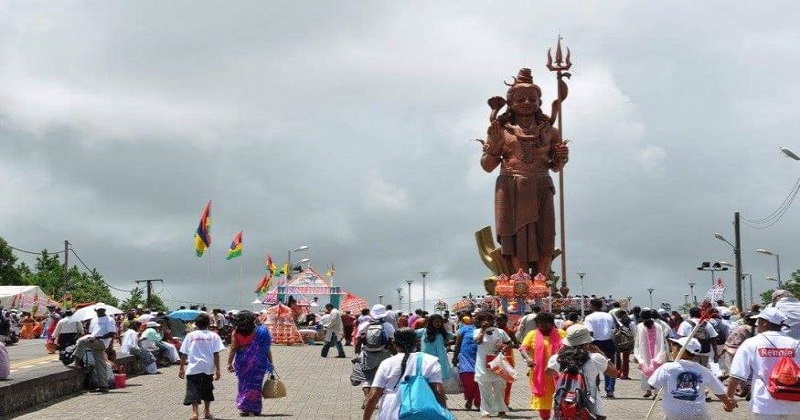
Maha Shivaratri is one of the most auspicious festivals in Mauritius, and it is observed with great zeal and dedication. The devotees travel to Ganga Talao, a deep crater lake and Shiva temple on the island’s southwest, to worship, chant, meditate, and make sacrifices of leaves from the sacred Bael (or Bilva) tree.
Thousands of pilgrims take the time before the long trek to painstakingly adorn their ‘Kanwars’, an ornate bamboo pole traditionally carried on the shoulders with water pitchers balanced at both ends – though these are sometimes significantly more complex affairs in recent years.
Once they arrive at their destination, pilgrims observe a fast and make specific food offerings to Shiva based on seasonal fruits and root vegetables, as well as Bilva leaves.
They also carry holy water from the lake to their local temple, where it is presented to the Shiva Linga (a symbolic representation of Shiva used for worship in temples). The most committed devotees stay for the Char pahar ki puja prayer ceremonies, a four-part process that lasts all night. This year, though, COVID procedures are being properly observed.
Also Read: Mahashivratri 2022: Learn Lord Shiva Mantras for various zodiac signs
Ganga Talao is a crater lake in the region of Savanne, Mauritius. It is located in a remote highland environment and is approximately 550 metres above sea level. The lake is considered the most sacred Hindu site in Mauritius.
The Shiv Mandir, dedicated to Lord Shiva, is located on the lake’s edge. Along the Grand Bassin, there are temples devoted to different Gods such as Lord Hanuman, Goddess Ganga, and Lord Ganesh. The lake’s grounds are home to a multitude of Hindu and non-Hindu deities, the most notable of which are the huge sculptures of Lord Shiva and Goddess Durga.

Post Your Comments